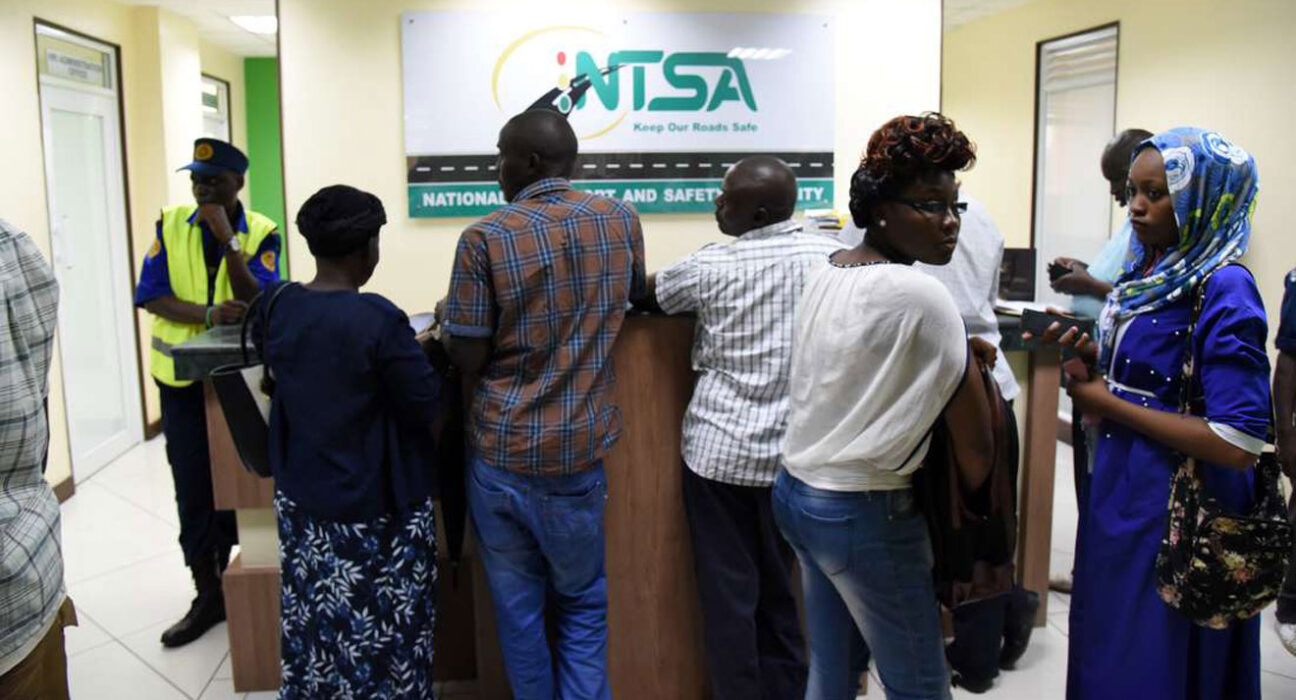In Kenya, buying or selling a second-hand vehicle is a common practice, with over two million used cars sold in 2018 alone. However, the process of transferring motor vehicle ownership and obtaining a new logbook is a critical legal requirement that ensures the vehicle is officially registered under the new owner’s name. Governed by the Traffic Act (CAP 403), Section 9, Kenyan law mandates that vehicle ownership transfer must be initiated within 14 days of a sale, donation, or succession. The National Transport and Safety Authority (NTSA) has streamlined this process through the eCitizen platform, making it more efficient and accessible. This comprehensive guide walks you through the step-by-step process of transferring motor vehicle ownership, dispatching a logbook, required documents, fees, timelines, and tips to avoid common pitfalls.
Understanding Motor Vehicle Ownership Transfer in Kenya
Transferring motor vehicle ownership in Kenya involves updating the logbook to reflect the new owner’s details. A logbook, issued by the NTSA, is an official document that proves ownership and includes critical details such as:
- Make, Model, and Year of Manufacture: For classification and insurance purposes.
- Color: For identification and legal requirements.
- Owner Information: Name, address, and contact details of the registered owner.
- Vehicle Registration Number: The unique identifier assigned to the vehicle.
- Insurance Details: Information about the vehicle’s insurance coverage.
The process is primarily conducted online via the NTSA’s Transport Integrated Management System (TIMS) on the eCitizen platform, eliminating the need for physical visits to NTSA offices. Both the seller and buyer must have active eCitizen accounts to complete the transfer seamlessly.
Why Is Vehicle Ownership Transfer Important?
Transferring ownership is not just a formality; it’s a legal necessity. Here’s why:
- Legal Compliance: Ensures compliance with NTSA and Kenya Revenue Authority (KRA) regulations.
- Liability Protection: Releases the seller from responsibility for any infringements committed by the new owner after the sale.
- Fraud Prevention: Verifies the legitimacy of the transaction, reducing risks of fraud.
- Insurance and Tax Compliance: Facilitates the transfer of insurance and ensures proper tax documentation.
Step-by-Step Guide to Transferring Motor Vehicle Ownership
The process involves two main parts: the seller initiating the transfer and the buyer accepting it. Below is a detailed breakdown of the steps, based on NTSA’s guidelines and the eCitizen platform.
Step 1: Seller Initiates the Transfer
The seller is responsible for starting the ownership transfer process. Here’s how:
- Log into eCitizen Account: Visit https://accounts.ecitizen.go.ke/ and sign in with your credentials. If you don’t have an account, create one by selecting “Sign Up” and following the prompts.
- Access NTSA Service Portal: Once logged in, select the “NTSA Service Portal (New)” from the dashboard. For organizations, click “Switch Accounts” to select the appropriate profile.
- Select the Vehicle: Navigate to the “Motor Vehicle” tab, click “View” to see the list of vehicles registered under your name, and select the specific vehicle to transfer.
- Initiate Vehicle Transfer: Go to “Motor Vehicle Services,” select “Vehicle Transfer,” and click “Apply.”
- Upload Logbook: Upload a colored, clear PDF scan of the original logbook. Ensure the scan is not defaced or blurred to avoid rejection.
- Enter Buyer Details: Select the type of ownership (Individual, Joint, or Financier). Provide the buyer’s details, including their KRA PIN and National ID/Alien ID for individuals, or PIN for companies/financial institutions. Click “Add” to populate the fields.
- Pay Transfer Fees: Submit the application and proceed to payment. The fees vary based on the vehicle’s engine capacity (see the fee schedule below).
- Accept Consent Notification: Return to the homepage, go to the “Notification” tab, and accept the consent notification to finalize your part.
Step 2: Buyer Accepts the Transfer
Once the seller submits the transfer request, the buyer receives an SMS notification and must complete the following steps:
- Log into eCitizen Account: Access the eCitizen platform using your login credentials.
- Access NTSA Service Portal: Select “NTSA Service Portal (New)” from the dashboard.
- Check Notifications: Go to the homepage, click the “Notification” tab, and review the transfer request. Verify the vehicle details (registration number, chassis, ownership type).
- Accept or Decline: Click “Accept” if the details are correct. Declining reverts ownership to the seller.
- Fill in Collection Details: Provide details for logbook collection, including the preferred NTSA counter collection office and the authorized person’s ID number (this can be the buyer or another person).
- Submit for Approval: Tick the declaration box to confirm the accuracy of the details, preview the application, and click “Submit” for NTSA processing.
Step 3: Logbook Dispatch and Collection
After the buyer submits the application, NTSA processes the transfer and issues a new logbook within 3 working days, provided all documents are in order. The new logbook is dispatched to the selected NTSA counter collection office, or NTSA’s courier services can deliver it to the buyer’s address. The buyer must surrender the old logbook when collecting the new one.
Required Documents for Vehicle Ownership Transfer
To ensure a smooth transfer process, both parties must prepare the following documents:
- Original Logbook: A clear, colored PDF scan of the logbook, filled with the names, signatures, and addresses of both parties.
- National ID or Passport: Copies for both the seller and buyer (for individuals).
- KRA PIN: For both parties, whether individuals, companies, or financial institutions.
- Sale Agreement: A document proving the transfer of ownership (e.g., sale, donation, or succession).
- Payment Confirmation: Proof of payment for transfer fees via M-Pesa, credit/prepaid card, or cash at KCB branches.
NTSA Vehicle Transfer Fees in 2025
The cost of transferring motor vehicle ownership depends on the vehicle’s engine capacity (CC rating) and includes a one-off e-sticker fee. Below is the updated fee schedule for second-hand vehicles in 2025:
| Vehicle Rating Capacity | Transfer Fee (Kshs) | E-Sticker Fee (Kshs) |
|---|---|---|
| 1000cc & below | 2,210 | 750 |
| 1001-1200cc | 2,440 | 750 |
| 1201-1500cc | 2,615 | 750 |
| 1501-1700cc | 2,960 | 750 |
| 1701-2000cc | 3,245 | 750 |
| 2001-2500cc | 4,395 | 750 |
| 2501-3000cc | 5,505 | 750 |
| 3001cc & above | 6,465 | 750 |
| Trailer (less than 4 wheels) | 1,580 | 750 |
| Trailer (4 wheels or more) | 2,240 | 750 |
| Tractor | 1,580 | 750 |
Note: Fees are subject to change, so verify the latest rates on the NTSA website or eCitizen portal before initiating the transfer.
Timelines and Expectations
The NTSA has significantly reduced processing times since moving services to the eCitizen platform in January 2024. The entire transfer process, from initiation to logbook dispatch, typically takes 3 working days if all documents are correct and complete. However, delays may occur due to:
- Incorrect or Missing Information: Errors in KRA PIN, ID, or logbook scans can lead to rejection.
- System Delays: Technical issues on the eCitizen or NTSA TIMS platform.
- Disputes: Legal issues, such as estate or marital disputes, may require a forced transfer process.
To avoid delays, double-check all details before submission and ensure both parties are responsive in accepting notifications.
Special Cases: Forced or Alternative Transfers
In certain circumstances, a standard transfer may not be possible, requiring a forced transfer. These scenarios include:
- Bank Repossession: When a vehicle is repossessed due to loan default.
- Court Order: Transfers mandated by legal rulings.
- Succession: Transferring ownership due to inheritance.
- Diplomatic Transfers: For vehicles owned by diplomats.
- Stolen Vehicle Recovery: When a vehicle is recovered and ownership needs verification.
For forced transfers, additional documentation, such as court orders or proof of succession, is required. The process follows a similar online procedure but may involve extra steps, such as visiting an NTSA office for verification. Consult the NTSA website or a professional service like Digitali Cyber Services for guidance.
Common Challenges and How to Overcome Them
Despite the streamlined process, challenges may arise. Here’s how to address them:
- Delayed Processing: Initiate the transfer early to account for potential system delays. Regularly check the NTSA portal for updates.
- Lost or Damaged Logbook: Apply for a duplicate logbook through the NTSA TIMS portal before starting the transfer. This requires additional fees and documentation.
- Disputes Between Parties: Involve a neutral party, such as a lawyer or mediator, to resolve disagreements before applying.
- Incorrect Information: Verify all details (KRA PIN, ID, vehicle registration) before submission to avoid rejection.
- Tax Implications: Consult a tax professional to understand any applicable taxes or duties related to the transfer.
Tips for a Smooth Vehicle Ownership Transfer
To ensure a hassle-free experience, follow these best practices:
- Verify Vehicle Details: Conduct an NTSA vehicle search (Ksh 550) to confirm the logbook details and ensure the vehicle is not stolen or under dispute.
- Use Trusted Professionals: Engage reputable services like AA Kenya or Digitali Cyber Services for assistance, especially for first-timers.
- Secure Payment: Pay transfer fees only through official channels (M-Pesa, KCB, or eCitizen) to avoid fraud.
- Notify Insurance Provider: Inform your insurance company about the ownership change to update coverage details.
- Act Promptly: Complete the transfer within 14 days to comply with the Traffic Act and avoid penalties.
The Role of eCitizen and NTSA TIMS in Modernizing Transfers
The migration of NTSA services to the eCitizen platform in January 2024 has revolutionized vehicle ownership transfers. The TIMS system offers:
- Convenience: 24/7 access to services from anywhere.
- Transparency: Real-time updates on application status.
- Security: Verification processes reduce fraud risks.
- Efficiency: Faster processing times compared to manual methods.
The NTSA App, available on Google Play Store, also allows users to track transfer progress and submit inquiries, further simplifying the process.
Transferring motor vehicle ownership and dispatching a logbook in Kenya is a straightforward process when done through the NTSA TIMS system on the eCitizen platform. By following the steps outlined—seller initiation, buyer acceptance, and proper documentation—both parties can complete the transfer in just 3 working days. With fees based on engine capacity and a clear timeline, the process is more accessible than ever. However, attention to detail, timely action, and compliance with NTSA requirements are crucial to avoid delays or complications.
Whether you’re selling a second-hand car, gifting a vehicle, or handling a succession, this guide equips you with the knowledge to navigate the process confidently. For additional support, consider consulting professionals or checking the NTSA website for the latest updates. Stay compliant, stay informed, and drive legally with your new logbook in hand.





